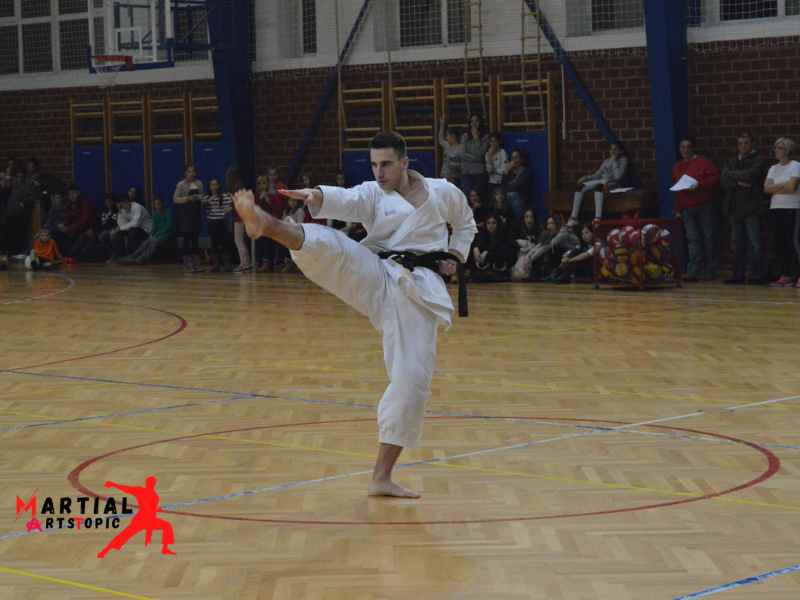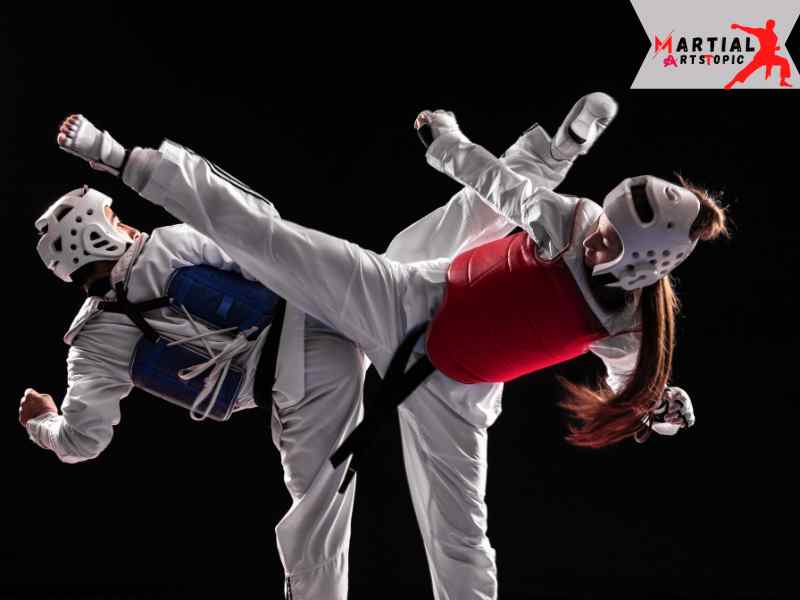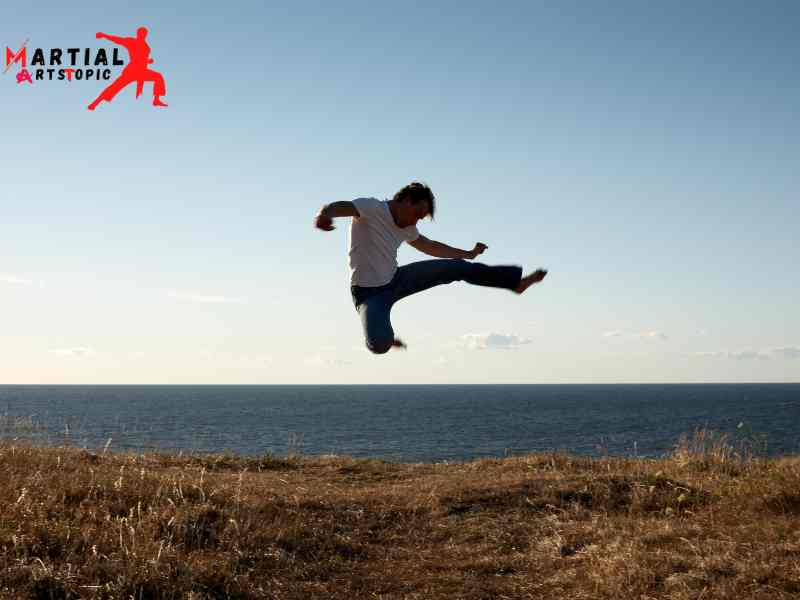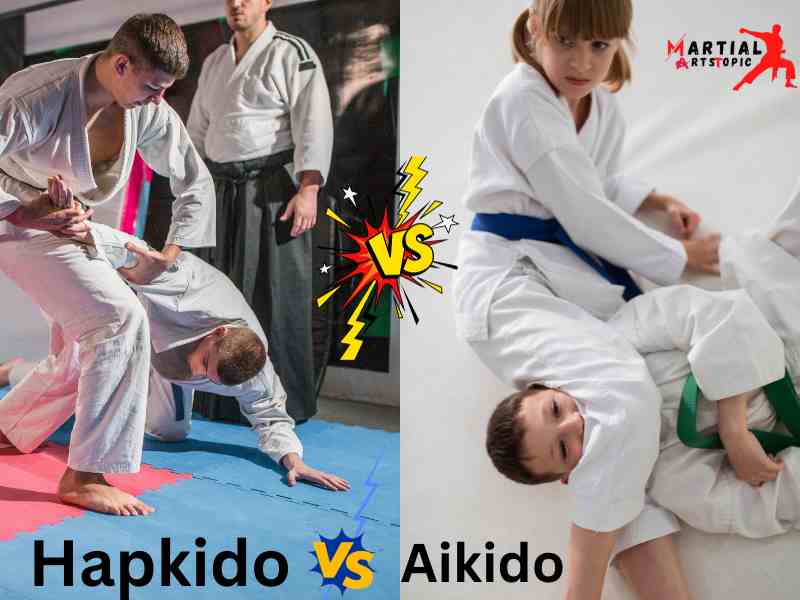
The History and Evolution of Hapkido: From Ancient Roots to Modern Practice
The History and Evolution of Hapkido: From Ancient Roots to Modern Practice Hapkido, a Korean martial art known for its dynamic and fluid techniques, has a rich history that dates back centuries. From its ancient roots to its modern-day practice, Hapkido has developed into a comprehensive self-defense system that continues to captivate martial arts enthusiasts around the world. In this blog post, we will delve into the fascinating history and evolution of Hapkido, highlighting its key milestones and influential figures along the way.
Ancient Origins: The Birth of Hapkido
Hapkido traces its origins to ancient Korea, where it was influenced by various martial arts styles, including Taekkyeon and Daito-ryu Aiki-jujutsu. The art was further developed during the Japanese occupation of Korea in the early 20th century, when Korean martial artists sought to preserve their cultural heritage and defend against foreign influences. It was during this time that the foundations of Hapkido as we know it today began to take shape.
The Founding Father: Choi Yong-Sool
One of the most influential figures in the history of Hapkido is Choi Yong-Sool, who is often referred to as its founding father. Born in 1904 in what is now modern-day South Korea, Choi was orphaned at a young age and was taken in by a Japanese man named Morimoto, who taught him Daito-ryu Aiki-jujutsu. Choi’s training in this martial art formed the basis of his later development of Hapkido.
Choi’s Return to Korea: Spreading the Art
After the end of the Japanese occupation, Choi returned to Korea and began teaching his unique martial art. He combined his knowledge of Daito-ryu Aiki-jujutsu with his understanding of Taekkyeon and other Korean martial arts, incorporating joint locks, throws, strikes, and kicks into a cohesive system. Choi’s teaching methods emphasized practical self-defense techniques that could be used in real-life situations, making Hapkido a highly effective martial art.
The Evolution Continues: Kim Moo-Hong and Ji Han-Jae
Following Choi’s teachings, two of his most prominent students, Kim Moo-Hong and Ji Han-Jae, played significant roles in the further development and popularization of Hapkido.
Kim Moo-Hong, a respected martial artist, expanded upon Choi’s teachings and established his own unique style known as Sin Moo Hapkido. This style incorporated principles of meditation and internal energy cultivation, emphasizing the harmonization of mind, body, and spirit.
Ji Han-Jae, another of Choi’s notable students, further refined and expanded the techniques and principles of Hapkido. Ji’s contributions to the art include the introduction of circular movements, redirection of energy, and the incorporation of pressure points. He founded the Korea Hapkido Association and played a pivotal role in promoting Hapkido both within Korea and internationally.
Hapkido Today: Modern Practice and Global Reach

Today, millions of individuals worldwide practice Hapkido, with schools and organizations dedicated to its study and promotion. Its effectiveness as a self-defense system, coupled with its emphasis on fluidity and adaptability, has made it a popular choice among martial arts enthusiasts of all ages and backgrounds.
In recent years, Hapkido has also gained recognition in popular culture through movies and media appearances, further boosting its global appeal. Its techniques, which include joint locks, throws, strikes, and kicks, continue to develop and adapt to the needs of modern practitioners, ensuring that Hapkido remains a relevant and effective martial art in today’s world.
Mastering Hapkido: Essential Techniques and Training Tips
Mastering Hapkido: Essential Techniques and Training Tips Hapkido is a dynamic martial art that originated in Korea. We know it for its emphasis on fluid movements, joint locks, throws, and strikes, making it an effective self-defense system. If you are interested in learning Hapkido or want to improve your existing skills, this blog post is for you. In this article, we will explore the essential techniques and training tips that will help you master the art of Hapkido.
Foundational Techniques
To become proficient in Hapkido, it is crucial to master the foundational techniques. These include stances, kicks, punches, and blocks. Practice each technique with precision and focus on developing strong body mechanics. Remember to maintain proper balance and alignment to maximize your striking power.
Joint Locks and Throws
Hapkido is renowned for its effective joint locks and throws. By leveraging an opponent’s momentum and using their energy against them, you can easily control and neutralize their attacks. Training in joint locks and throws will enhance your ability to subdue opponents of various sizes and strengths.
Striking Techniques
In Hapkido, striking techniques involve a combination of punches, kicks, and strikes to vulnerable areas of the body. Mastering striking techniques not only improves your offensive capabilities, but also helps you defend yourself against potential threats. Practice striking drills regularly to perfect your timing, accuracy, and speed.
Defense against Weapons
Hapkido training also includes defense against weapons such as knives, sticks, and guns. Learning how to disarm an opponent and neutralize their weapon is a crucial skill for self-defense. Train under the guidance of a qualified instructor to develop the necessary techniques and reflexes to protect yourself in real-world scenarios.
Sparring and Application
To truly master Hapkido, it is essential to engage in sparring and apply the techniques in a realistic setting. Regular sparring sessions will help you develop your reflexes, timing, and adaptability. It is important to practice with a partner who challenges you but maintains a safe environment.
Training Tips
- Consistency is Key: Regular training is essential to progress in Hapkido. Devote dedicated time to practice and set realistic goals for yourself.
- Seek Professional Guidance: Find a qualified Hapkido instructor who can guide you through the proper techniques and training methods. Their expertise will ensure that you learn the art correctly and avoid injuries.
- Focus on Fundamentals: Mastering the basics is crucial in any martial art. Pay attention to details and perfect your foundational techniques before moving on to advanced techniques.
- Cross-Train for Strength and Flexibility: Incorporate strength and flexibility training into your routine to enhance your overall physical fitness. This will improve your performance in Hapkido and reduce the risk of injuries.
- Stay Committed and Patient: Learning Hapkido, like any martial art, takes time and dedication. Be patient with yourself and embrace the learning process. Celebrate minor victories along the way and stay committed to your training.
Hapkido for Self-Defense: Empowering Yourself with Martial Arts

Hapkido for Self-Defense: Empowering Yourself with Martial Arts In today’s world, personal safety has become a top priority for many people. With the increasing rates of crime and violence, it’s crucial to have the knowledge and skills to protect oneself. This is where martial arts, particularly Hapkido, come into play. Hapkido is a Korean martial art that focuses on self-defense techniques and techniques for disabling opponents. It is an effective method of self-defense that empowers individuals and provides them with the confidence to handle any dangerous situation.
Hapkido is a comprehensive martial art that combines striking, kicking, and grappling techniques. It emphasizes the use of leverage and joint locks, making it suitable for people of all ages and physical abilities. Whether you are a beginner or an experienced martial artist, Hapkido offers a wide range of techniques that can be tailored to your individual needs.
One of the key advantages of Hapkido as a self-defense system is its focus on redirecting an attacker’s energy. Instead of relying solely on brute force, Hapkido practitioners learn to use an opponent’s momentum against them. This allows for efficient and effective self-defense without relying on size or strength. By learning how to redirect an attacker’s force, individuals can neutralize threats and stay in control of dangerous situations.
Another essential aspect of Hapkido is its emphasis on joint locks and submission holds. These techniques are designed to immobilize an opponent and render them unable to continue their attack. By targeting an attacker’s joints and applying pressure in specific areas, Hapkido practitioners can quickly subdue an opponent without causing permanent harm. This makes Hapkido a practical and responsible choice for self-defense, as it allows individuals to protect themselves while minimizing the risk of causing severe injuries.
Apart from physical techniques, Hapkido also provides mental and emotional benefits. The rigorous training and discipline involved in Hapkido help practitioners develop focus, self-control, and confidence. Through regular practice, individuals learn to remain calm and composed in stressful situations, enabling them to make better decisions and react effectively.
Moreover, Hapkido training promotes physical fitness and overall well-being. The dynamic movements and exercises in Hapkido improve cardiovascular health, flexibility, and strength. By engaging in regular Hapkido training, individuals can enhance their physical capabilities, which can be beneficial in self-defense scenarios and everyday life.
The Role of Meditation in Hapkido: Cultivating Inner Strength
The Role of Meditation in Hapkido: Cultivating Inner Strength Hapkido, a Korean martial art that focuses on self-defense techniques, has gained immense popularity worldwide. Practitioners of Hapkido not only develop physical strength and agility, but also aim to cultivate inner strength and mental well-being. One of the key practices that contributes to the holistic development of a Hapkido practitioner is meditation.
Meditation plays a crucial role in Hapkido by promoting mindfulness, concentration, and self-awareness. In this blog post, we will explore how meditation enhances the practice of Hapkido and helps in the cultivation of inner strength.
- Mindfulness in Hapkido: Meditation helps in developing mindfulness, which is the state of being fully present and aware of the current moment. By practicing meditation regularly, Hapkido practitioners learn to focus their attention on their breath, bodily sensations, and thoughts. This heightened sense of mindfulness allows them to be fully present during their training sessions, enabling them to react swiftly and effectively to any situation.
- Concentration and focus: Hapkido demands intense concentration and focus to execute techniques with precision and accuracy. Through meditation, practitioners train their minds to stay focused on a single point of attention, such as their breath or a mantra. This practice strengthens their ability to concentrate and enhances their focus during Hapkido training, enabling them to perform at their best.
- Emotional Regulation: Hapkido can be physically and mentally challenging, often requiring practitioners to remain calm and composed in high-pressure situations. Meditation helps in developing emotional regulation by providing a space for practitioners to observe their thoughts and emotions without judgment. This practice enhances their ability to manage stress, stay composed, and make rational decisions in the face of adversity.
- Self-Awareness and intuition: Hapkido emphasizes the importance of self-awareness, both in terms of physical movements and internal states. Meditation enhances self-awareness by creating a deeper connection between the mind and body. Through regular meditation practice, Hapkido practitioners develop a heightened sense of intuition, allowing them to anticipate their opponent’s moves and respond accordingly.
- Inner Strength and resilience: Hapkido training can be physically demanding, and practitioners often face obstacles and setbacks along their journey. Meditation helps in cultivating inner strength and resilience by fostering a positive mindset and a deep sense of self-belief. By connecting with their inner selves through meditation, Hapkido practitioners can tap into their inner reserves of strength and push through challenges with determination and perseverance.
Hapkido Weapons Training: The Art of Defense
Hapkido Weapons Training: The Art of Defense In the world of martial arts, Hapkido stands out as a comprehensive self-defense system that encompasses both unarmed combat techniques and the mastery of various weapons. From the use of traditional weapons like the sword and staff to more modern tools like the knife or cane, Hapkido weapons training is an essential aspect of this dynamic martial art.
What is Hapkido?
Hapkido, which translates to “the way of coordinated power,” originated in Korea and was developed by Grandmaster Choi Yong Sul. It is a martial art that focuses on redirecting an opponent’s force and using their energy against them. Hapkido practitioners utilize joint locks, throws, strikes, and kicks to neutralize attackers quickly and efficiently. This art form emphasizes the importance of fluidity and adaptability, making it suitable for people of all ages and abilities.
Why Include Weapons Training in Hapkido?
While Hapkido is renowned for its close-quarters combat techniques, the inclusion of weapons training adds an extra layer of depth and versatility to practitioners’ skill sets. Hapkido weapon techniques not only enhance the overall self-defense capabilities but also help practitioners develop better coordination, focus, and discipline.
Benefits of Hapkido Weapons Training

- Self-Defense: Learning how to effectively use weapons can provide individuals with an added advantage in self-defense situations. Mastering various weapons in Hapkido allows practitioners to maintain distance from their attackers while still being able to neutralize the threat efficiently.
- Coordination and balance: Hapkido weapons training requires precise coordination and balance. Practitioners learn how to control and manipulate weapons while maintaining their own stability. This enhances overall body awareness and control.
- Focus and concentration: Weapons training in Hapkido demands intense concentration and focus. Practitioners must be fully present in the moment to execute techniques accurately and efficiently. This carries over into other aspects of life, enhancing mental clarity and discipline.
- Physical Fitness: Hapkido weapons training is physically demanding, requiring strength, flexibility, and agility. Regular practice can improve cardiovascular health, muscle tone, and overall fitness levels.
Common Weapons in Hapkido
- Sword (Geom): The sword is one of the most iconic and traditional weapons in Hapkido. Practitioners learn various cutting and thrusting techniques, as well as defensive maneuvers.
- Staff (Jangbong): The staff is a versatile weapon that teaches practitioners how to generate power and maintain control over long distances. It enhances hand-eye coordination, footwork, and overall body mechanics.
- Knife (Ddang): Knife training in Hapkido focuses on quick and efficient movements, emphasizing the use of angles and precision strikes. Practitioners learn how to defend against knife attacks while also understanding offensive techniques.
- Cane (Jangbong): The cane is an everyday object that can be readily used for self-defense. Hapkido cane techniques teach practitioners how to maximize the weapon’s potential and defend against various types of attacks.
Why Hapkido is the Perfect Martial Art for Women
Hapkido: The Perfect Martial Art for Women In a world where personal safety is a concern for everyone, it’s important for women to feel empowered and equipped to defend themselves. This is where Hapkido, an effective martial art, comes into play. With its focus on practical self-defense techniques, Hapkido is the perfect choice for women looking to enhance their personal safety and gain confidence in their abilities.
Why is Hapkido perfect for women?
- Practical self-defense techniques: Hapkido is designed to be effective in real-life situations, making it a practical choice for women who want to feel safe in everyday scenarios. From escaping grabs and chokes to defending against multiple attackers, Hapkido equips women with the skills necessary to protect themselves.
- Focus on leverage and technique: Hapkido’s emphasis on leverage and technique allows women to use their opponent’s strength against them. This means that size and strength are not as important, making it accessible to women of all fitness levels and body types.
- Increased confidence and empowerment: Learning Hapkido not only equips women with essential self-defense skills but also boosts their confidence and empowerment. Through regular training, women gain a sense of mental and physical strength, which translates into other areas of their lives.
- Fitness and flexibility: Hapkido is a physically demanding martial art that offers a full-body workout. Women who practice Hapkido can expect to improve their strength, endurance, flexibility, and overall fitness. Additionally, the repetitive movements and techniques in Hapkido help to improve coordination and muscle memory.
- Stress relief and mental well-being: Hapkido training provides an outlet for stress and promotes mental well-being. The focus required during training helps women develop mindfulness and concentration, allowing them to escape the pressures of daily life. Furthermore, the discipline required in Hapkido training can help women develop a strong mindset and resilience.
The Benefits of Practicing Hapkido for Self-Defense and Personal Growth
The Benefits of Practicing Hapkido for Self-Defense and Personal Growth Hapkido, a traditional Korean martial art, has gained popularity worldwide for its practical self-defense techniques and its ability to promote personal growth. With its emphasis on fluid and efficient movements, hapkido provides practitioners with a comprehensive set of skills that can be applied in real-life situations. In this blog post, we will explore the various benefits of practicing hapkido for self-defense and personal growth.
- Effective Self-Defense Techniques: One of the primary reasons why many individuals choose to practice hapkido is its effectiveness as a self-defense system. Hapkido techniques are designed to neutralize and immobilize opponents quickly and efficiently, regardless of their size or strength. By learning hapkido, individuals can gain the confidence and ability to protect themselves and their loved ones in various situations.
- Improved Physical Fitness: Hapkido training involves a combination of striking, throwing, joint locks, and ground fighting techniques, which require strength, flexibility, and stamina. Regular practice of hapkido can significantly improve overall physical fitness levels, including cardiovascular endurance, muscular strength, and flexibility.
- Mental Discipline and Focus: Hapkido training requires practitioners to cultivate mental discipline and focus. The practice of repetitive techniques and the need to stay present in the moment during training sessions help develop concentration and mental clarity. These skills can be beneficial not only in martial arts but also in other aspects of life, such as work, studies, and personal relationships.
- Stress Relief: Like any other physical activity, hapkido can serve as a fantastic stress reliever. Engaging in regular training sessions can help release accumulated tension and reduce stress levels. Additionally, the mental focus required during practice can provide a temporary escape from daily worries and promote a sense of calmness and well-being.
- Increased Self-Confidence: Through hapkido training, individuals can develop a strong sense of self-confidence. As techniques are practiced and mastered, students gain a better understanding of their physical capabilities and learn how to assert themselves effectively. This newfound confidence can transcend the training environment and positively impact various areas of life, including relationships and professional endeavors.
- Improved Self-Discipline: Hapkido training instills a sense of self-discipline in practitioners. Consistency and commitment are essential in mastering the techniques and progressing through the ranks. The discipline acquired in hapkido can be transferred to other areas of life, helping individuals achieve their goals and overcome challenges.
- Enhanced Problem-Solving Skills: Hapkido requires practitioners to think quickly and make split-second decisions during sparring or self-defense scenarios. This practice can enhance problem-solving skills and the ability to adapt to changing situations. The problem-solving skills acquired through hapkido training can be applied to various aspects of life, including work, academics, and personal relationships.
- Increased Body Awareness: Hapkido training helps individuals develop a heightened sense of body awareness. Through practicing techniques and engaging in partner drills, students become more attuned to their body’s movements, strengths, and limitations. This increased body awareness can lead to improved coordination, balance, and overall physical performance.
Hapkido vs Other Martial Arts: What Sets It Apart?

Hapkido vs Other Martial Arts: What Makes Hapkido Stand Out?When it comes to martial arts, there is a wide variety of options to choose from. From karate to taekwondo, each martial art has its own unique set of techniques and philosophies. However, one martial art that truly stands out from the rest is Hapkido. In this blog post, we will explore what sets Hapkido apart from other martial arts and why it might be the perfect choice for you.
Hapkido, also known as the “way of harmony and power,” originated in Korea and has gained popularity around the world. It is a comprehensive martial art that incorporates a wide range of self-defense techniques, including strikes, kicks, joint locks, throws, and ground fighting. What sets Hapkido apart is its emphasis on fluidity and adaptability, making it effective in real-life combat situations.
One of the key features that distinguishes Hapkido from other martial arts is its focus on circular and flowing movements. Unlike some martial arts that rely heavily on brute force, Hapkido utilizes an opponent’s energy and redirects it against them. By using circular motions and joint manipulation, practitioners of Hapkido can subdue and control their opponents without relying solely on strength.
Another defining characteristic of Hapkido is its emphasis on practical self-defense techniques. While other martial arts may have a more sport-oriented approach, Hapkido prioritizes real-life combat situations. It teaches practitioners how to defend themselves against various attacks, including punches, kicks, grabs, and weapons. By training in Hapkido, you’ll gain the skills and confidence to protect yourself and others in real-world scenarios.
In addition to its practical self-defense techniques, Hapkido also focuses on developing a strong mind-body connection. Mental discipline and mindfulness are integral aspects of Hapkido training. Through dedicated practice, practitioners learn to control their emotions and maintain a calm state of mind, even in high-pressure situations. This mental fortitude not only enhances their self-defense abilities but also carries over into other areas of life, promoting overall well-being.
It also known hapkido for its inclusivity and adaptability. Regardless of age, gender, or physical fitness level, anyone can practice and benefit from Hapkido. They can tailor it to suit individual strengths and limitations, making it accessible to a wide range of people. Whether you are looking to improve your fitness, learn self-defense, or simply explore a new hobby, Hapkido offers something for everyone.
In conclusion
Hapkido is a highly effective martial art that combines strikes, joint locks, and throws to create a comprehensive self-defense system. Its emphasis on redirecting an opponent’s energy and using their own movements against them makes it suitable for practitioners of all ages and physical abilities. Hapkido not only teaches self-defense techniques but also cultivates mental and physical discipline, promoting overall well-being. Whether you are looking to improve your self-defense skills, increase your fitness level, or develop self-confidence, Hapkido offers a holistic approach that can benefit individuals of all backgrounds. By studying and practicing Hapkido, one can embark on a rewarding journey of personal growth and mastery.
